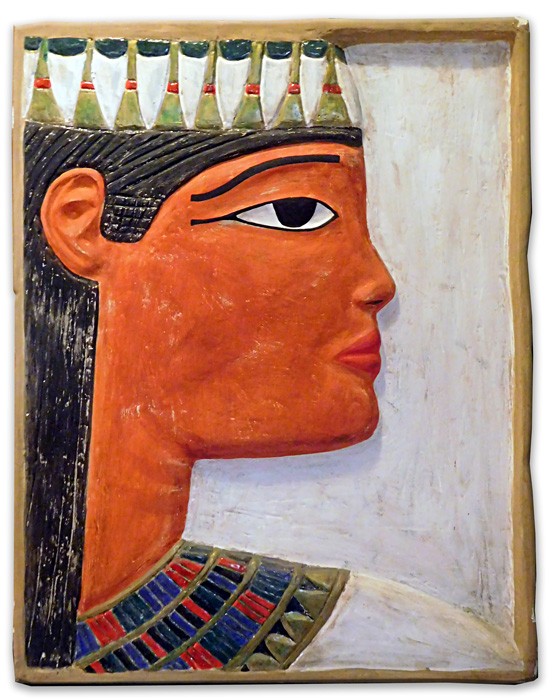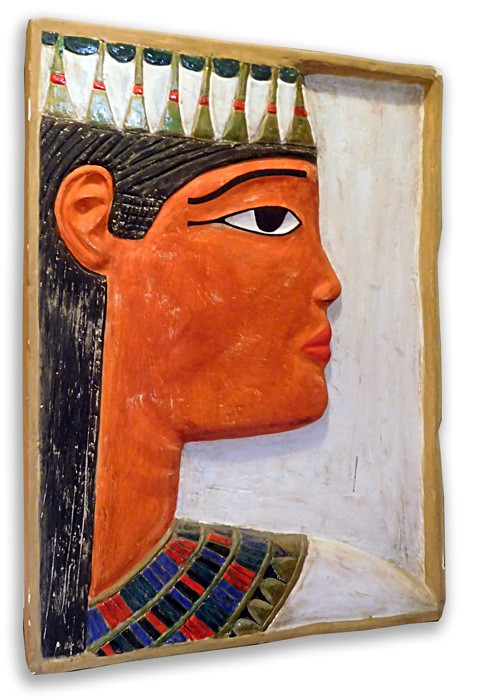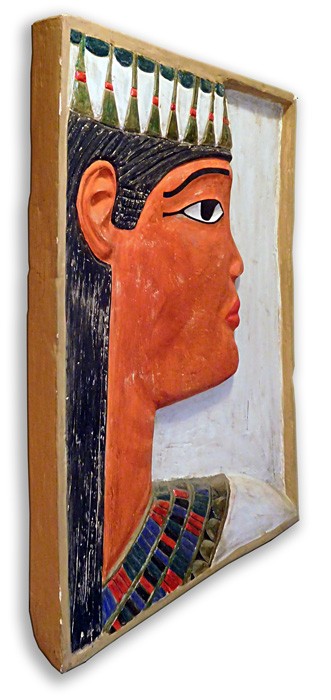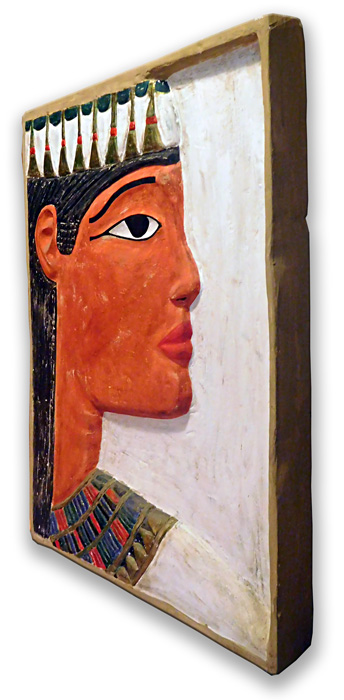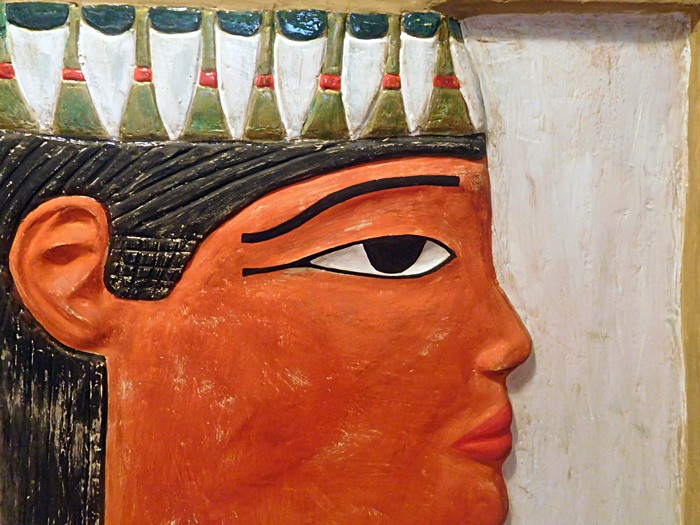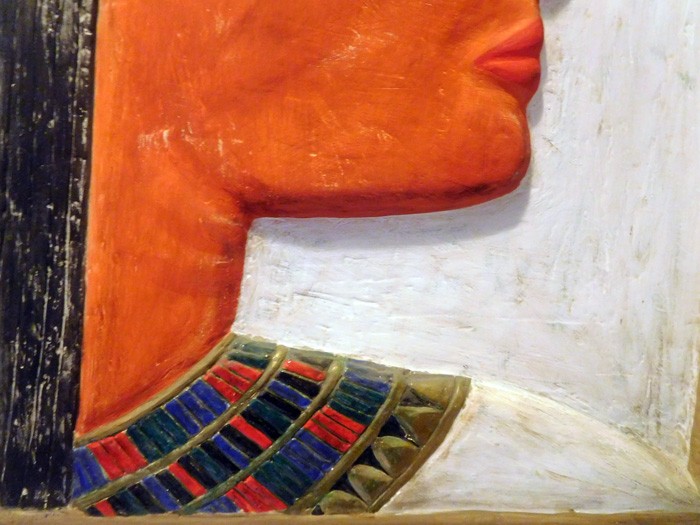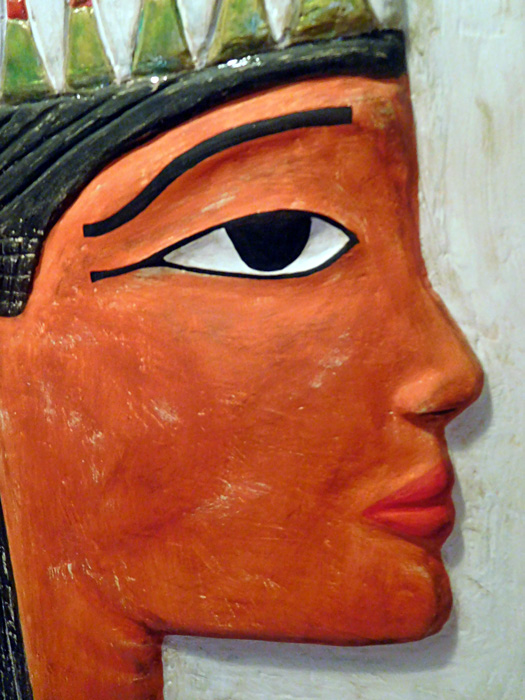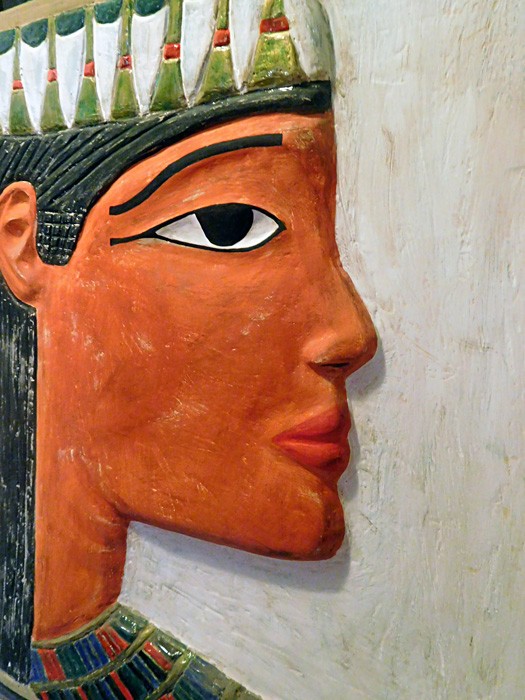Egyptian bas-relief
Serie: Objects
Technique: Scenographic
Size: 50 x 65 x 8 cm
Year: 2004
Made according to scenographic techniques, this bas-relief is a response to the Egyptian characteristics of this type of art.
The openwork and subsequent patina work was carried out following the historical models, taking care that every detail is respectful of the art in which it is inspired.
Egyptian bas-reliefs are used for hieroglyphic inscriptions, representations of gods and pharaohs, domestic life, agricultural tasks or afterlife scenes, and above all to commemorate the victories of the pharaohs.
The reliefs were polychrome with the tempera painting technique.
The sculptures and bas-reliefs adhered to a series of conventions or norms that remained unchanged in almost all periods.
- Law of Frontality: The figures are conceived to be seen from the front; they are very symmetrical, as if they had been sculpted with respect to a central axis, the two parts being very similar.
- Canon in profile: In the bas-reliefs the figures were represented with the face, arms and legs in profile, while the trunk and the eye were sculpted from the front.
- Hierarchy: The most important figures were larger and more detailed than those of the other characters, and showed hieratic attitudes, lack of expressiveness, a sign of respect and divinity.
- Absence of perspective: There was no depth but a juxtaposition of figures that are in the same plane.
- Use of spot colors: They used the colors with uniform tones and very defined contours.
The bas-relief is a sculptural technique to make images or inscriptions on the walls.
It is achieved by highlighting the edges of the drawing and carving the figures, slightly lowering the wall, protruding the background around the figure.
Thus a three-dimensional effect is obtained and once the contour was lowered, and the inside of the figures carved, the whole set was painted in bright colors.
NOT AVAILABLE FOR SALE
< Back to PORTFOLIO

